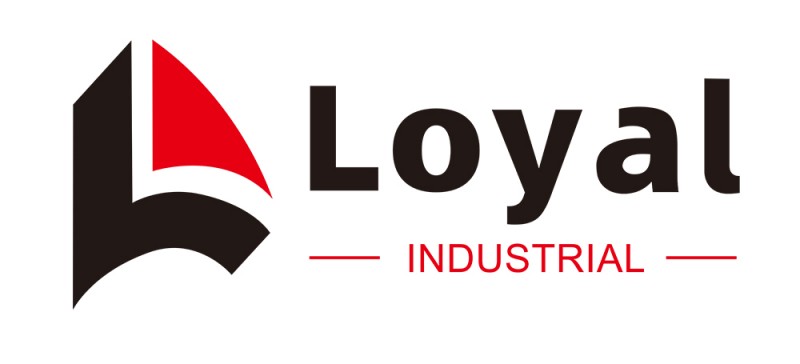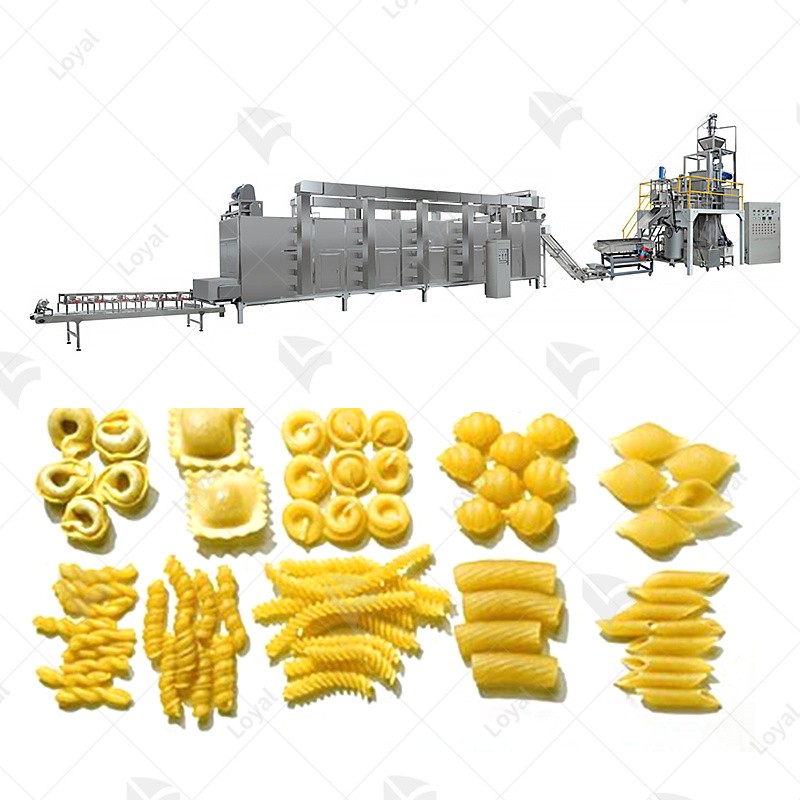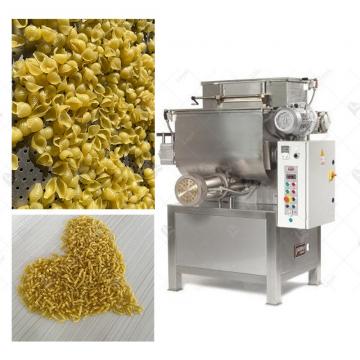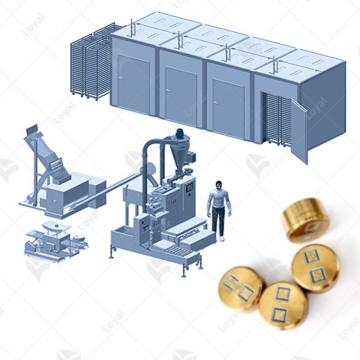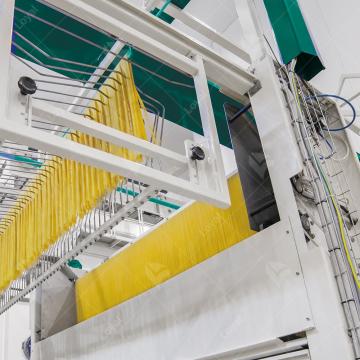Pasta Manufacturing Plant: High-Efficiency Energy Savings Rooted in Europe
Pasta Manufacturing Plant: High-Efficiency Energy Savings Rooted in Europe
Pasta manufacturing plants play a pivotal role in the global food industry, providing a staple that is beloved worldwide. This article delves into a key theme that has become integral to the evolution of these plants—high-efficiency energy savings. We will explore how European influence has played a significant role in shaping the adoption of energy-efficient practices within pasta manufacturing, setting the stage for sustainable and responsible production.Shandong Loyal Industrial Co., Ltd. has incorporated advanced technologies from Germany's Buhler and Italy's GEA in the production of its macaroni.

European Innovations in Pasta Manufacturing
Exploration of Origins:
European origins have deep historical ties to pasta manufacturing, with innovations that have stood the test of time. From traditional methods to modern techniques, European influence has been a driving force in shaping the landscape of pasta production.
Key Innovations:
This section provides an overview of key innovations originating from European pasta manufacturing plants. From the introduction of advanced machinery to the integration of cutting-edge technologies, European plants have been at the forefront of revolutionizing pasta production.
High-Efficiency Energy Savings:
Introducing the concept of high-efficiency energy savings as a hallmark of European pasta manufacturing excellence, this section sets the foundation for understanding how energy-efficient practices have become synonymous with quality and innovation.
High-Efficiency Energy Solutions in Pasta Manufacturing Plants
Technological Analysis:
An in-depth analysis explores the various energy-efficient technologies employed in modern pasta manufacturing plants. From advanced machinery to sustainable practices, we examine how these solutions contribute to enhancing efficiency while minimizing environmental impact.

Case Studies:
This section presents case studies highlighting successful implementation of high-efficiency energy solutions. Real-world examples, such as Barilla, De Cecco, Creamette, San Giorgio, and Great Value, showcase how leading brands have embraced energy-efficient technologies to improve both production processes and product quality.
Environmental and Economic Benefits:
Discussing the environmental and economic benefits associated with energy-efficient practices, we delve into how these solutions contribute to sustainable and responsible manufacturing. Industry experts emphasize the dual advantages of reducing carbon footprints while increasing cost-effectiveness.
Operational Advantages and Cost Savings
Operational Efficiency:
An examination of the operational advantages derived from high-efficiency energy solutions reveals how these technologies streamline pasta production processes. From increased automation to optimized workflows, operational efficiency is a key outcome.
Cost-Saving Implications:
Analyzing the cost-saving implications for pasta manufacturing plants adopting energy-efficient technologies, this section explores how investments in sustainability translate into long-term financial benefits. The focus is on achieving a balance between profitability and environmental responsibility.
Sustainable and Responsible Manufacturing:
Insights into how energy-efficient practices contribute to sustainable and responsible manufacturing highlight the importance of aligning operational processes with broader environmental goals. This section emphasizes the role of pasta manufacturing plants as stewards of sustainability.
European Sustainability Practices in Pasta Manufacturing
Overview of Sustainable Practices:
This section provides an overview of sustainable practices championed by European pasta manufacturing plants. From waste reduction to water conservation, European plants have been instrumental in shaping sustainability standards.
Integration of Renewable Energy Sources:
Discussing the integration of renewable energy sources in pasta production, we explore how European plants harness natural resources to power their operations. This shift towards renewable energy contributes to reducing the environmental impact of pasta manufacturing.
Role of European Sustainability Standards:
Highlighting the role of European sustainability standards in shaping the global pasta manufacturing landscape, this section emphasizes how adherence to these standards enhances the reputation of European pasta products on the global stage.

Future Trends and Innovations
Emerging Trends:
This section explores emerging trends and innovations in high-efficiency energy solutions for pasta manufacturing plants. From advancements in technology to evolving consumer preferences, we anticipate how these trends will shape the future of the industry.
Anticipation of Future Advancements:
Anticipating future advancements and their potential impact on the industry, we delve into the continuous evolution of pasta manufacturing towards greater energy efficiency. Industry experts provide insights into the exciting possibilities that lie ahead.
Staying at the Forefront:
Considering how pasta manufacturing plants can stay at the forefront of sustainable practices, this section offers strategic considerations for maintaining a competitive edge in a dynamic market. The focus is on adaptability and a forward-thinking approach.
Conclusion
Summarizing the key points regarding high-efficiency energy savings in pasta manufacturing plants, the conclusion emphasizes the transformative impact of European influence. By adopting energy-efficient practices, pasta manufacturing plants not only enhance their efficiency but also contribute to a more sustainable and responsible food industry.
Emphasizing the pivotal role of European influence in shaping sustainable practices, the conclusion underlines the historical significance of European innovations and their enduring impact on the global pasta manufacturing landscape. The article concludes with a forward-looking perspective on the continued evolution of pasta manufacturing towards greater energy efficiency, highlighting the industry's commitment to a more sustainable future.
FAQs: Common Questions about Pasta Manufacturing Plants
Q1: How have European innovations influenced pasta manufacturing plants globally?
A: European innovations have played a foundational role in shaping the methods and technologies used in pasta manufacturing plants worldwide. From traditional practices to cutting-edge machinery, European influence is synonymous with excellence in pasta production.
Q2: Can you provide examples of pasta manufacturing plants adopting high-efficiency energy solutions?
A: Certainly. Notable examples include Barilla, De Cecco, Creamette, San Giorgio, and Great Value. These industry leaders have successfully implemented energy-efficient technologies, showcasing the positive impact on both their operational efficiency and environmental responsibility.
Q3: What are the environmental benefits of energy-efficient practices in pasta manufacturing?
A: Energy-efficient practices contribute to reducing carbon footprints, minimizing energy consumption, and lowering greenhouse gas emissions. These environmental benefits align with broader sustainability goals, making pasta manufacturing plants key contributors to responsible manufacturing.

Q4: How do energy-efficient technologies enhance operational efficiency in pasta manufacturing?
A: Energy-efficient technologies streamline operational processes in pasta manufacturing plants by optimizing workflows and increasing automation. This not only improves overall efficiency but also enhances the consistency and quality of pasta production.
Q5: Is there evidence that adopting high-efficiency energy solutions leads to cost savings for pasta manufacturing plants?
A: Yes, there is substantial evidence that investing in high-efficiency energy solutions translates into long-term cost savings for pasta manufacturing plants. The reduction in energy costs, increased operational efficiency, and potential incentives contribute to a positive economic impact.
Q6: What role do European sustainability standards play in the global pasta manufacturing landscape?
A: European sustainability standards set a benchmark for responsible manufacturing practices in the global pasta industry. Adherence to these standards not only enhances the reputation of European pasta products but also encourages similar sustainability efforts worldwide.
